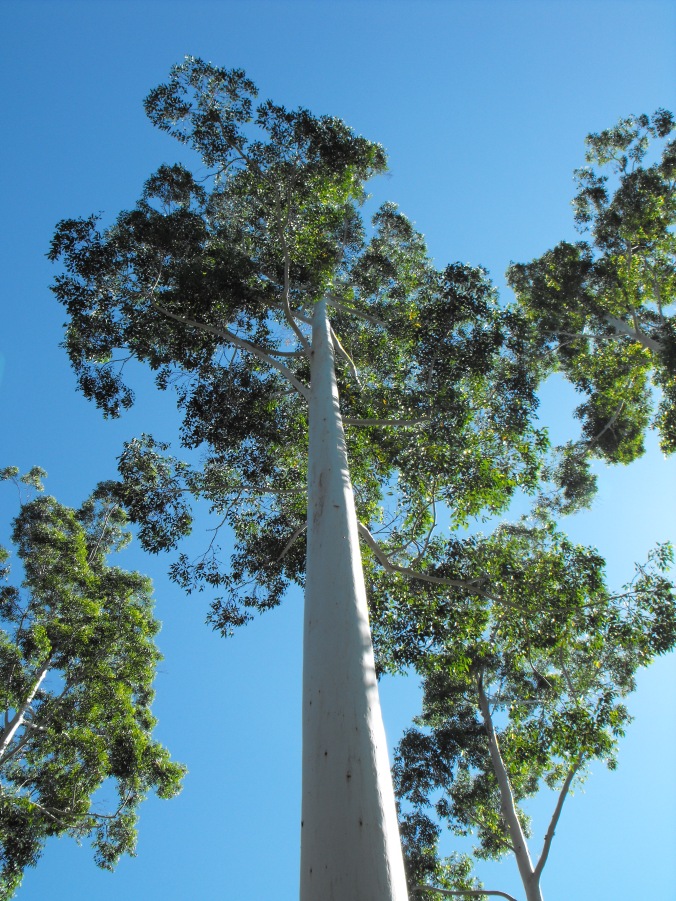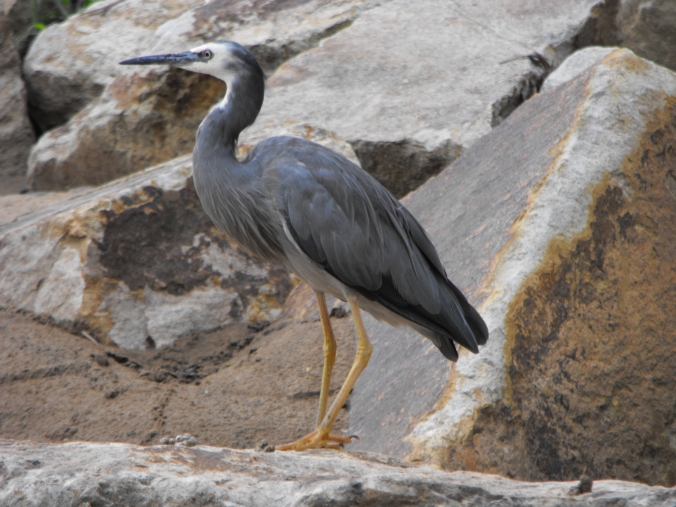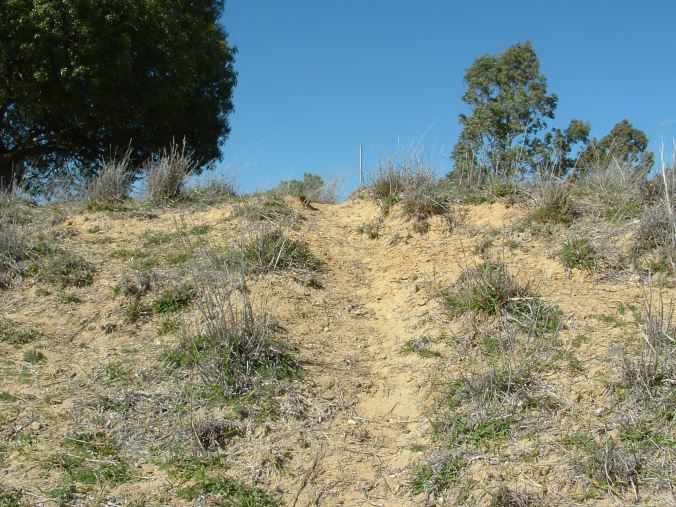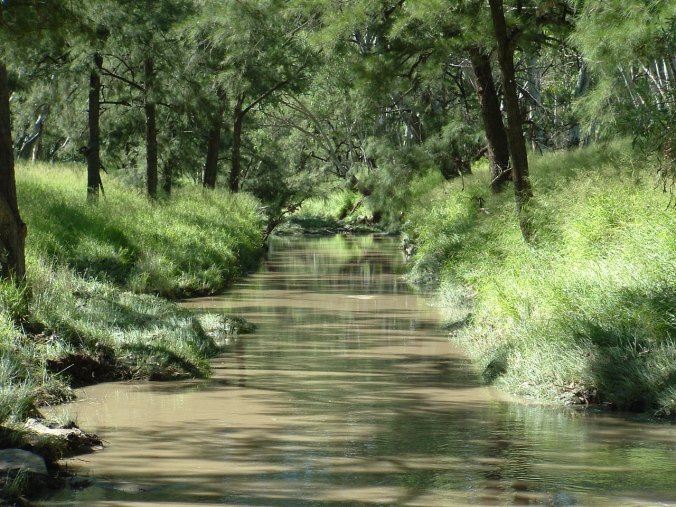The most effective way to save the threatened and decimated natural world is to cause people to fall in love with it again, with its beauty and its reality. – Peter Scott
I remember what parks looked like when I was a child. Most were uninspiring patches of grass and prickles with one or two trees, a token swing set, a splintered wooden see-saw and a scarily tall slippery slide. I recall frying my rear end and upper legs on baking hot summer days as I zoomed down enormous shimmering metal slides, often ending up bruised and concussed on a rock hard bed of concrete. While they seemed exhilarating at the time and we certainly learned to be physically tough, I do think the elaborate green spaces I see in cities today with their mini-forests, gardens, ponds and lakes are a vast improvement. They provide sanctuaries for wildlife and much needed nature therapy for stressed residents.
Recently, I read the blog post Wilderness – A State of Mind by well known Australian wildlife photographer Steve Parish. In it he discusses the need to preserve and create green spaces within cities. I feel happiest when I’m walking in isolated national parks but that’s not always possible these days, so instead I often seek escapes in the many parklands and reserves that lie within the city boundaries.
We may despair as we see developers build yet another new housing block or be disappointed when bushland is turned into crops or grazing land. However, at one point the land on which we live now was also natural forest. People do need places to live, food to eat and jobs. It’s all about compromise and finding some kind of workable balance. I’ve been fortunate to have interactions with primary producers and companies who embrace more environmentally conscious practices.
I value the shared public spaces within my own community and this post is a celebration of these green escapes that can be enjoyed by all. If we want to protect our wilderness environment I think we need to ensure it’s a topic that people can relate to. Our beautiful parklands and reserves are an important step towards helping people appreciate, value and fall in love with the natural environment. When you love something you are generally more motivated to put effort into not losing it.
I’ve previously written about Karawatha, Venman Bushland Reserve, Mt Coot-tha Forest and White Rock Conservation Park. This time I’ll be sharing a few images of much smaller areas – Robelle Domain Parklands, Springfield Lakes and Nerima Gardens, all within the shire of Ipswich which adjoins the city of Brisbane.
I’ve also included some images of the Roma farm where I once lived which was owned by a couple who were dedicated to transforming what was originally a severely degraded piece of land into something which could sustain their grazing business as well as be a home for wildlife. It’s another example of a more balanced approach. People will always need food, housing and jobs but there are ways in which we can provide these which are kinder to the environment.
And now to share some local treasures with you…
Queen’s Park in Ipswich, near Brisbane is a beautiful place to escape. I often take work to the Nerima Japanese Gardens, which have been designed using mainly native species. The ponds provide a home to a large population of magnificent water dragons which stare at me dubiously as I try to concentrate. Queen’s Park also includes an Environmental Education Centre and many recreational pathways to enjoy. The Ipswich Nature Centre allows people to get to know some native fauna, such as wallabies, emus, wombats, spotted quolls and goannas while the Frank Manthey Bilby Burrow houses endangered bilbies and spinifex hopping mice. The Ipswich City Council nursery on site offers free tree and shrub seedlings to all rate payers each year to encourage a greener community.
Springfield Lakes Parkland is another beautiful escape for local residents of the Greater Ipswich Area. I’ve spent many hours walking around these artificial lakes which provide homes and breeding grounds for a large number of water birds, fish, frogs, reptiles and mammals. The lakes are a popular spot for walkers and the local remote control sailing boat club frequently makes use of the still waters.
Robelle Domain Parklands is another highlight of the Ipswich region. Comprising 24 hectares, it offers residents more than 11 km of boardwalks, walking and cycle paths, playgrounds and sporting areas. Tall ghost gums and other native trees and shrubs as well as artificial waterways provide refuge for local species.
Be warned though. If you happen to be standing over a hidden automatic water sprinkler head early in the morning you could be in for a surprise! I’ve been caught out twice so far.

Me in white with some cycling friends enjoying the pathways. For overseas readers, helmets are compulsory in Australia by law.
Preserving Green Spaces on Rural Properties
For six years I lived on a grazing property in south west Queensland. When the owners of this Roma property first bought the land, they had a massive job ahead of them. The land had been severely overgrazed, contributing to large areas of eroded land. By building 50km of contour banks, fencing off creek lines and careful management of their stock, they were able to make marked improvements to the landscape. As a result, we saw a huge increase in native fauna to the area particularly frog and bird species. Contour banks helped slow down water that would otherwise have run straight down heavily eroded slopes. Not allowing grazing along creek lines allowed re-vegetation which helped prevent soil being washed downstream.
These images show how severely degraded the land was initially.
Not allowing stock animals to graze along creek lines helped regenerate vegetation, preventing soil loss.
Building contour banks helped slow the movement of water down heavily eroded slopes.
Ground cover from a variety of grass and other plant species improved dramatically.
This encouraged the return of wildlife, in particular green frogs which often shared our showers. The presence of high numbers of frogs is an indicator of the health of a region. Fortunately, the invasion of the exotic cane toad species had not made it to the farm so the native amphibians did not have to compete.
Land management practices both in urban and rural environments can make a huge difference to the preservation of our native species of fauna and flora, and in the end we all benefit. I love hiking in National Parks, but I also love and appreciate the parks and reserves in our urban areas and the bushland on rural properties.
Ecologist Ian Lunt has a very interesting and useful Facebook page that shares Australia’s Best Ecology Blogs. I was lucky enough to have a couple of my posts appear there recently even though I am not officially an ecology blogger. So if you are interested in ways of preserving our Australian environment, check out his page.
I hope my hard-core hiking followers will forgive me for sharing some rather tamer walking destinations this week. Next week will be back to normal (if I can find the missing albums on my hard drive!)
Happy hiking!
Jane

























































Jane thanks for another great post. Great photographs, love the Spotted Quoll. And thanks for helping the land. Everybody needs to preserve this treasure.
Hi John,
I’m really glad you liked the post. It’s not my usual hiking tale but I hoped someone would enjoy the pics. Thank you for your encouragement. I really appreciate it. 🙂
Hello Jane. I just love perusing photographs of so many life forms in your neck of the woods? While in New York City this summer, I found I was drawn most often to the little city parks, and the well-known Central Park, where I felt tremendously connected with Mother Nature, just as I feel here at home. I am thankful for the efforts of those people who forge forth to build and preserve “nature” spots in the city, as well as preserves in more rural settings.
Hi Lori,
I also find I am drawn to the parks of large towns and cities whenever I visit. Within a short time of being there I feel a desperate need to touch base with natural surroundings. The noisy, fast moving traffic, the harsh surfaces and glare of city streets is quite exhausting to my spirit. That’s why I appreciate these lovely nature spots so much. I am thankful I live in a city that provides them. I often hear of New York’s Central Park and can imagine what a wonderful escape it must be to frazzled city residents. Thanks for reading and commenting, Lori. May you continue to gain much pleasure out of your natural surroundings. And I do hope the rooster problems get sorted! 🙂
As a city dweller myself I appreciate all the trouble that is put nowadays into creating great green spaces for us to breath in.
Yes, it is lovely that city dwellers can have these wonderful escapes. Many people do not have the funds, time or mobility to travel to distant places for a little dose of nature. I am especially happy that city children have these green spaces to play in. Brisbane and Ipswich have many lovely green spaces which do help to improve our quality of life. I am thankful for the efforts of others to provide them. Thanks, Susan, for reading and commenting. Lovely to hear from you again.
The previous comment went before I had finished. I was going to say that your post was so special that I am going to keep it in my inbox to savour as the week goes by.
Oh, Susan, what a lovely thing to write. Thank you. You are very kind! I am glad that you enjoyed it so much. I wondered if people would find it a little boring since it is about parklands rather than more isolated walks. Have a happy week. 🙂
Hi Jane,
I really like your post. You take such lovely pictures. I was wondering if you could give me some tips?
Hi!
I’m happy that you enjoyed the post, in particular the pictures. I am very much the amateur when it comes to photography though. I still use a borrowed camera. It’s usually on the automatic setting except when I take close-ups of flowers and insects. Then I switch it to the macro setting. I usually take 100s of pictures every time I hike. It is my hope then that I’ll get a dozen or so that will look ok. So you see I am not much of a teacher! Thank you for the nice compliment though and for reading. 🙂
I love this post. Your photos show me a wonderland that I’ve never seen, fascinating for the plants and creatures, all. I fell in love with the water dragons especially (I have a deep fondness for lizards).
Thank you! I’m glad it was something new for you. I have a fondness for these water dragons too. They do make me laugh when they seem to look at me with such suspicion or disapproval. I’m afraid I get a little too distracted sometimes, when I should be focused on working on my lap top. They are actually very quiet and let me come up quite close to them. When they start bobbing their heads up and down, I know they are displaying territorial behaviour, and I back off. Have a lovely week and thank you for reading and commenting. 🙂
What a great post! As you’ve pointed out, each small oasis of habitat near metropolitan areas not only provide places for wildlife, but also for people to interact with nature, and therefore develop a deeper appreciation for nature. Also, simple changes in farming or ranching practices can pay huge dividends for wildlife and the health of an ecosystem as well. That, along with the great photos are the reasons I love this post so much!
Thanks Jerry! Comments like that encourage me to keep plodding away with these posts. I’ve wanted to write this one for a while but hesitated since it’s not actually a “hike” but these green spaces have really helped my sanity over the years since moving to the city. I love that we have these spaces. I’m especially glad that children have access to them as exploring nature was such a fun part of my own childhood. And of course, these places are wonderful for our wildlife population. I know that you grew up spending a lot of time in the woods so you also appreciate their value. Thank you so much for your high praise. It is very encouraging to me. I’m happy you loved it. 🙂
I loved this post and it thrills me to hear folks working to keep nature alive in the urban areas… or reclaiming places that have been spoiled for one reason or another. From previous comments it looks to me like no one objected to this departure from more ‘serious’ hiking.
Hi Gunta,
I’m so glad you loved this post! Our local parks really help me to relax and cope with work and other stress. I’ve actually spent many more hours in these smaller green spaces than I have in more wilderness areas. I also appreciate the efforts of farmers/graziers who put effort into preserving or improving their natural environment. I always enjoy your positive comments, Gunta. Yes, it does seem like I haven’t annoyed too many people by not writing about “serious” hiking. Thank you! 🙂
Thank you Jane for stopping by and checking us out.
I always love blogs that have bird and or wildlife pictures, and yours are no different. I especially like the red dragonfly.
Hi,
I enjoyed having a look at your blog too. I wish I had more time to read the posts. I usually catch up on weekends with everyone’s blogs. I’m glad you found something interesting in mine too. I have a fondness for dragonflies and spend a lot of time trying to photograph them but sadly it is a rare event when I can get a decent shot. They are just too fast for me. Thanks by dropping by and commenting! 🙂
Yes, burnt bums from the metal slide in the park – or in our case, the school playground! We quickly learnt to check the temperature first!
Queens Park in Ipswich is amazing. I couldnt believe my eyes when I first went there (a uni excersion). Its what I might imagine in a small zoo, not something open to the public and run by the local council!
Mind you, that was before I knew how things are done in other states. Stephen was surprised to hear Qld doesnt have a state owned & run zoo. Well, not currently. Keeping a few animals at the City Botanic Gardens at the turn of last century apparently no longer counts.
The point tou make here is most valid though: we must enjoy and appreciate nature where ever we can, and do our best to improve it where it has been degraded.
Excellent photos, as usual.
😊
Hi Dayna,
Yes, those schoolyard slides were pretty nasty! The metal monkey bars set on a concrete base were also rather interesting in the heat. The playground equipment of today seems very much focused on safety now with the soft landing surfaces. Maybe we are making the kids too soft these days… 😉 A plaster cast was a right of passage back then.
Yes, I am sure the zoos and sanctuaries in the southern states are pretty impressive! I visited the Western Plains Zoo at Dubbo when I lived in NSW and was pretty impressed by the set-up. That’s when I learnt how amazing Giraffe tongues are! I suppose it is funny that we haven’t got a state-run zoo. Australia Zoo is fairly popular but of course is privately run and certainly not free to the public.
Thanks for reading and commenting, Dayna. Always great to get your feedback! 🙂
Wow. I had no idea Brisbane’s immediate surrounds had such excellent wildlife spots. The bilbies! And what a fantastic photo of the Eastern water dragon poking his head out of the water – magnificent!
Hi Oanh!
We are very lucky to have these beautiful and free spots to escape to and appreciate the wildlife. I was amazed that Ipswich council has this nature centre for all to enjoy. It’s such a gem. I love seeing the delight on the faces of children as they get to learn about these animals for the first time. The water dragons were certainly putting on a great show for me the day I took those photographs. They are very entertaining. Thanks for reading and the kind feedback, Oanh! 🙂
Your post really highlights the importance of green spaces in urban areas Jane. Not just for the wildlife but for the physical, mental and emotional health of us two legged creatures. Another great post Jane.
Hi Amanda,
Yes, I really don’t know if this two-legged creature could survive without her nature escapes! Too much time in front of a computer and at a desk tends to fry my brain and at my age I need to conserve as many brain cells as possible. Thanks for reading and commenting. Always so lovely to read your encouraging feedback, Amanda. 🙂
Like you, I’ve often enough said that people need places to live, but I wish that developers of subdivisions would leave more (or even any!) of the land untouched. The neighborhood where I live was developed in the 1980s, and I moved to Austin in 1976, so it would have been possible for me to see what this area looked like before houses and roads were put here, if I’d had a crystal ball to look into the future. Alternatively, if I could get in a time machine now I’d like to go back and see this land before development. Those are fantasies, but a few of the first inhabitants of this neighborhood managed to get the developer to donate some unbuildable canyonland along a creek to the city of Austin. That is now the Great Hills Park I mention from time to time (most recently as the site of frostweed ice). A few years ago people raised money to buy a little adjacent land and add it to the park, so there are occasional successes even when many properties keep being lost to development.
Hi Steve,
At present the area in which I live is still being cleared and turned into housing developments. I used to drive past a section of native bushland every day and be thankful for its presence but now it is gone. Thankfully, we do have long stretches of wildlife corridors that remain and new laws mean developers are encouraged to include parklands and retain areas of bushland in their design. I think that buyers in my area are now expecting more from developers than just a tiny backyard, especially those with families. They want green spaces for their children. It is my hope that new laws and the changing expectations of buyers will help to preserve more natural bushland. In Australia we used to have laws that required farmers and graziers to clear/poison a certain percentage of trees from their property, even if they didn’t want to. This contributed to many problems such as rising salinity, erosion and of course, the reduction of native species. Now we are trying to turn back time with tree planting projects. There is still a lot that is happening in our country which is damaging to the environment (such as large mining projects) and needs to be changed, but there are some positive things as well and so I try to be hopeful. It can be difficult sometimes though! Thanks for reading and writing such a detailed and interesting response! I value your comments, Steve.
I love the things you show us.I’m a naturefreak and love to walk.
I’m so glad you enjoyed the pictures. I’m a nature freak too! Thanks for reading and commenting. It’s lovely to hear from you. 🙂
What a fantastic, informative post – great pics, too. Thanks Jane, you rock
Thanks Jenni! I hope all your plans are going well for the PCT? It’s getting closer! Thanks for reading and commenting. Lovely to hear from you. 🙂
Thanks, yes I’m done! 66 sleeps to go and I’m as ready as I can be, just waiting on my permit to enter Canada via the PCT ( if I get that far!). Now it’s just the logistics of bill-paying etc while I’m gone…..
What a beautiful photos of an amazing nature.
Hi! I’m glad you like the photographs. It gives me pleasure to share my nature experiences. I enjoy the photos on your blog also. Thank you for reading and for your kind comments. 🙂
Hi Jane, This is a most excellent post. When I saw that you had published this post some time ago, I made a mental note to come back to it and I am glad I did.
Cities and suburbs without parks would be sterile places. As you have observed, the design of modern open spaces has come a long way. The great advantage of urban open spaces is people can use them at any time because they are close to where people live, work and shop.
It is so cool to have a bilby burrow. I hope that with the passage of time, the Easter Bilby will take over from the Easter Bunny in the popular imagination.
Hi Margaret,
I am delighted that you enjoyed this post. I really enjoyed sharing some of my favourite urban escapes. I feel fortunate to have so many to choose from in my local area. It does make city life so much more bearable. It’s a joy to watch children running about in these spaces exploring and being able to do what I did as a child. It’s also lovely to see people spending their lunch breaks there, relaxing.
I am surprised that more people don’t know about the bilby burrows at Queen’s Park Nature Centre. I think it’s pretty special. Yes, it would be lovely to be able to have Easter bilbies being more popular, wouldn’t it? Thanks for reading and for your lovely comments, Margaret. I do enjoy hearing from you. 🙂